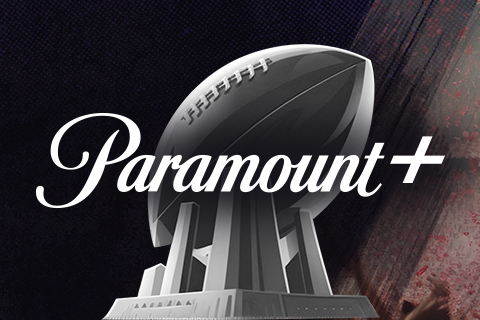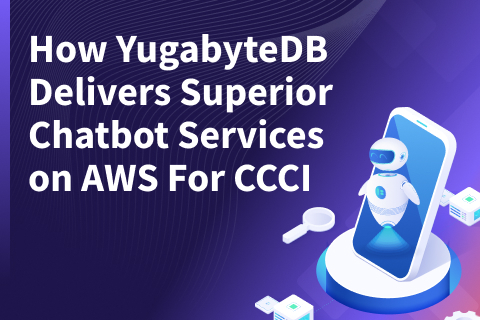Expanding Modernization from Applications to Databases—A Chat with Charles Schwab
At the recent Distributed SQL Summit, David Loomis, Managing Director of Infrastructure, Operations, and Cloud Platforms at Charles Schwab shared his experience in directing the company’s application and database modernization strategy.
Yugabyte Strategy and Marketing VP, Suda Srinivasan, met with David to discuss the industry changes that accelerated Charles Schwab’s modernization plans.
This wide-ranging discussion covered how Charles Schwab’s journey began by discussing the importance of distributed SQL in their database platform modernization plans and the limitations of traditional RDBMS databases.
Below is an excerpt of the key points covered during the conversation.
Charles Schwab Chat Highlights
Q: Over the last 5+ years, we have seen tremendous change across many different industries. Can you walk us through what you see driving technological innovation today?
For us, innovation is all about how a large organization can become more agile, advance concepts better, drive progress, and bring products and services to market.
Why? Because our focus is on addressing the needs of our clients. For example, how can we meet their access requirements—providing them with true 24x7x365 access to their assets so they can manage them anytime, anywhere? This requirement continues to grow, so year over year we remain focused on supporting customers’ expectations around basic user interaction and transactional accuracy.
From a data perspective, this means we have requirements around availability and scalability as we continue to grow through a series of mergers and acquisitions.
Another change that drives innovation is the market volatility that came with the pandemic. We continue to see extreme spikes in requests for trades (and other financial transactions) and specific stocks, which, again, drives our need for a fully scalable solution.
So what this all comes down to is that we have to provide our services at scale while dealing with extreme volatility. This led to conversations around what platforms to use, overall availability requirements, and how to architect for the future.
Q: People expect financial services firms—their banks, trading platforms, and other fintech companies—to act in the same way and provide the same services as retail and e-commerce platforms. People compare their experiences with you (in terms of responsiveness, accessibility, and accuracy) to what they receive on Amazon or Google. This is driving massive change. So it’s good that Charles Schwab has been on an application modernization journey for a few years now. Can you tell us a bit about where that journey started? Where did you start? What did it look like in the beginning?
It has been a journey, and I love that you’re pointing out that financial services companies now have similar requirements to what you would expect in the public cloud and with many significant SaaS offerings. We had to build a roadmap to migrate from an on-prem environment, where we had a significant footprint, to a modern, microservices-oriented, cloud native architecture. The containerization of our applications has been at the core of that seven-year journey.
Today, we have a significant portion of our Tier 1 applications—and many other applications—running on containerized platforms. This has been key in terms of our ability to react, whether in response to a new acquisition, merger, or geopolitical concern. We can move workloads quickly, from data center to data center and from data center to public cloud, because we have not only containerized our applications but also adopted the principles of the twelve-factor (app) methodology as we build new apps.
Q: You moved your applications to containers, which then led you to revisit the data architecture because you had all these cloud native, microservice-based applications running in hybrid and multi-cloud environments. Your databases were not matching your app infrastructure. So, in many ways, the benefits of app modernization were limited by the data infrastructure, and that drove you to begin the process of database modernization.
Yeah, Absolutely.
Q: Can you speak to how you discovered distributed SQL? Where do you see distributed SQL databases fitting into your database needs or architecture?
We want to make sure our data is where it needs to be so that we can scale—not only across zones but also across regions—and handle different failure scenarios seamlessly. So, to make sure that the integrity of the transaction is maintained across zones and regions, we looked at distributed SQL. That’s really why we began looking at distributed SQL databases—to bring that compute power to our hybrid approach and operate anywhere.
Q: In financial services, “eventually consistent” is not good enough; data has to be strongly consistent and durable. It cannot be lost even if you have a region-level failure. Your database has to be able to survive that, and that is something that a distributed SQL database can provide. So, when you compare distributed SQL with traditional relational databases, what are some of the use cases where you see one fitting better than others?
From a transactional perspective, applications require different platforms. So, in terms of a database, there usually isn’t always a one-size-fits-all solution. It would certainly be easier if we could have one that fulfills all requirements, but, that being said, I think distributed SQL has a very promising future in its ability to meet an enterprises’ functional and non-functional requirements. But, moving forward, it’s important to understand an application’s specific requirements. To do that, you must stay in tune with the application developer community. This way, you know what they’re looking for and can understand the entire lifecycle of the data being managed.
Q: Technology for technology’s sake has never been how people innovate. What are the business outcomes or benefits that drove you to pick distributed SQL? In other words, what are you expecting to get from this database modernization initiative?
So, let me take it back almost to the beginning. As I mentioned before, one of the core principles at Charles Schwab is to support the client experience. In other words, we always put the client first, working very hard to ensure that they can interact with us how they want, their assets are protected, and that all data is secure, accurate, and available. There are so many different dimensions and perspectives that are critical. But, at the end of the day, it’s about our clients and ensuring we are doing the right thing for them. That’s what’s going to drive our database modernization efforts forward.
Discover More Customer Fireside Chats
Want to watch the full fireside chat with Charles Schwab?
Watch David and Suda discuss Expanding Modernization from Applications to Databases on-demand, plus catch other YugabyteDB customer fireside chats from DSS 2022 featuring Wells Fargo, Fiserv, Kroger, and Comcast.
Watch the full fireside chat or read other great customer stories from Yugabyte:


